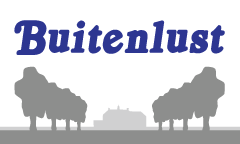First details emerging
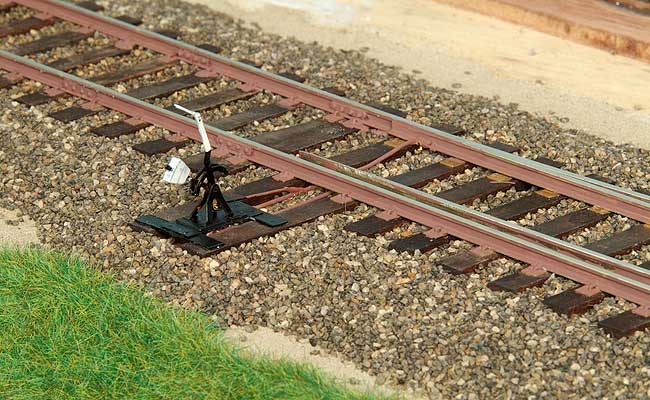
January 2008. The first details are staring to appear. For example this typical Dutch points lever. It still needs a bit of paint, but it is out there and it is working. Details like this are much more present in 0 than in H0. Here you really see the fun of modelling in a larger scale.

More has happened. Just before the holidays I managed to complete the four Dutch goods cars I bought as a kit. Despite the bitter cold in my garage I managed to get the spray painting done well. Maybe I will put a heater in the garage in my new house now. Another project is the bridge over the canal. The basic construction work has been done and it is ready to be painted.
Big steps
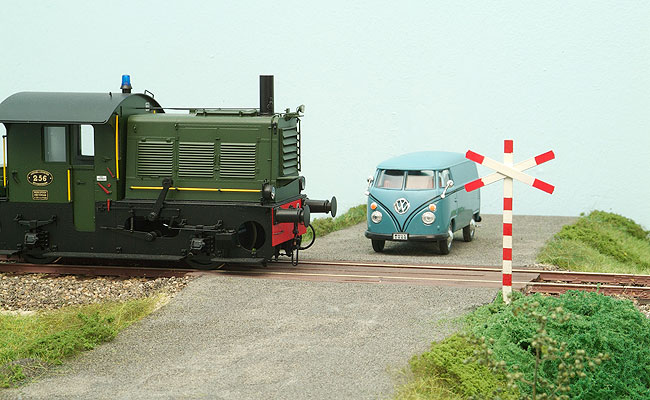
February 2008. At lot has happened to the scenery of the last few weeks. First of all, the small railway crossing was born. The road surface is made by scattering fine split into the wet grey paint. This gives the impression of the coarse tarmac you can find on country roads. The warning signs at the crossing I made myself.

The bridge has been finished too. Only the water surface remains to be done. I have already painted the bottom in appropriate colours. The water ways will be filled by a thin layer of transparent resin. The dike is covered with weeds, bushes and young trees. It really is starting to look like a typical Dutch dike.

The modules have been wired completely and they are ready to be used. After long consideration I decided to settle for LocoNet as the main digital network for now. There are two strong reasons for that. First, all LocoNet modules have their own address. If you swap modules around, the numbering stays in tact. Second, LocoNet provides a single cable for all digital equipment you can possible connect to a layout. When you are building a semi-portable layout that is also an advantage. I have developed a small hub, the LocoHub, to make wiring LocoNet easier.
Thirst for more
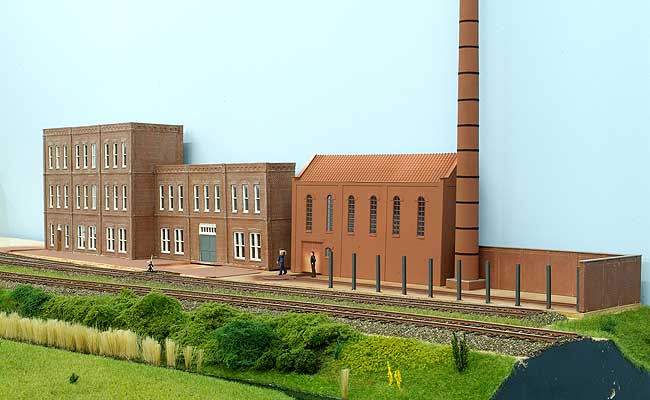
March 2008. The lemonade factory ‘Vrolic’ is beginning to take shape. The buildings are roughly done, just some painting and a lot of detailing remains to be done. The left building is an American kit from Design Preservation Models, the right building is supposed to be the engine house and boiler room. I made it myself from Slaters’ Plastikard.

A short stretch of field track runs from the engine house to the coal depot. I used Roco H0 track for it. The track width is 12 mm, which is also known as 0f. The coal depot will be formed by putting coarse planks between the metal H-profiles. This idea is based on old photographs from a real factory somewhere in Holland.
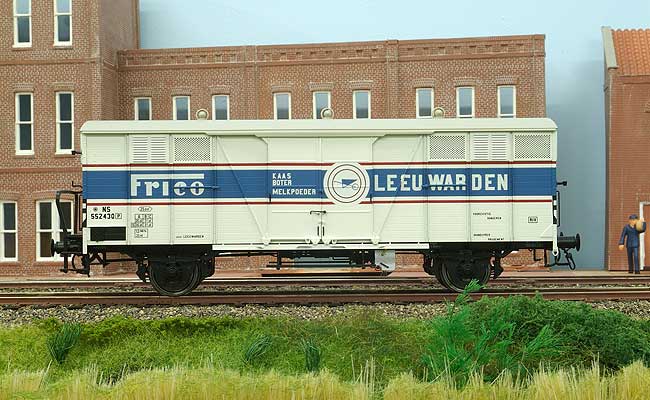
The latest addition to the collection: the Frico goods car from Philotrain. It is expensive, but it is marvellous. The model has of course doors that open, but also the bolts on the door really work! And what about functional blade suspension? I have never seen this on a model before. Of course the underside is fully detailed and the axles have roller bearings.
Half a factory is double the fun
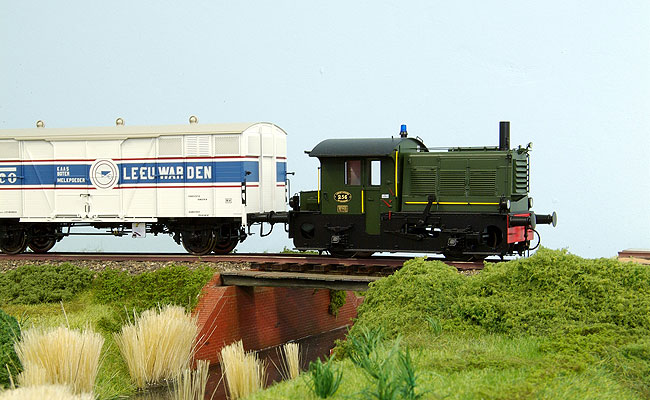
April 2008. The water ways have been filled with water or resin to be exact. The ‘Sik’ shunter is on its way with butter, cheese, eggs and other cargo. Both models are by Philotrain. I will retrofit this model with an electronic flywheel (power storage device) later this year.

The right side of the factory is about done. It still needs additional detailing and weathering, but the basis is there. All buildings have partial interiors and they are fully illuminated. They chimney has been equipped with a smoke generator. behind the windows you can see special effects like welding and fire.

It was a long journey, but in the end I found a perfect material to create the water. It is a special transparent resin without any solvents. It is called Poly-Pox THV 500, with harder Poly-Pox 155. Both are available in Holland from Poly-Service in Amsterdam. I am quite pleased with the final result.
2008
